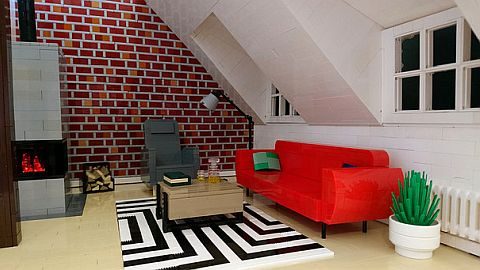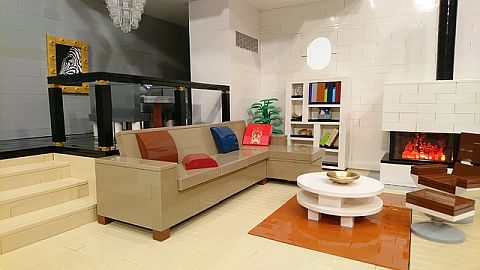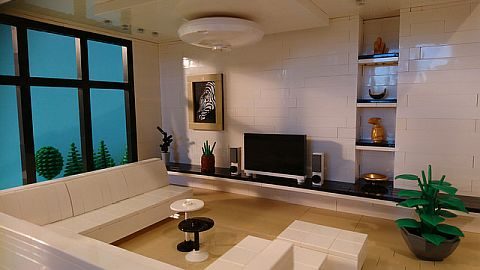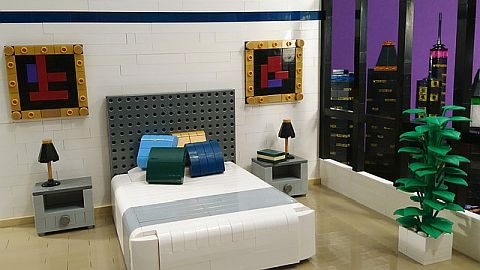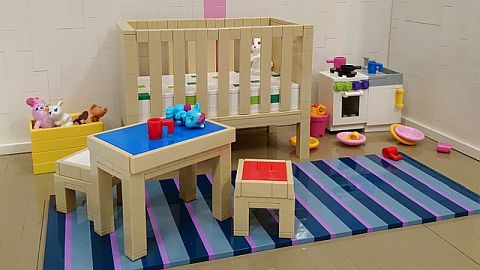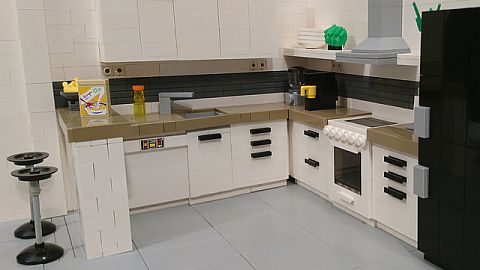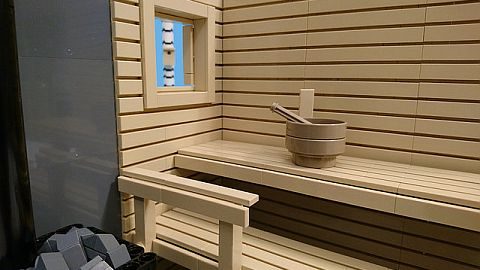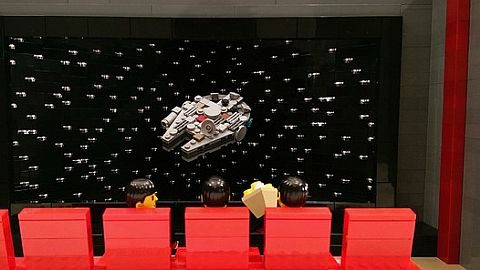A number of new LEGO Technic sets were released last month, so I thought it would be a good idea to take a closer look at all of them. I’m not an expert on LEGO Technic, so I will take the help of LEGO Technic master builder Sariel, who will show you all the plusses and minuses of each set in detail. LEGO Technic sets are an interesting challenge for those who are mechanically inclined. LEGO also greatly improved the aesthetics of LEGO Technic sets in the past few years, so they look great on display as well. So, let’s take a look at the four new LEGO Technic sets! 🙂
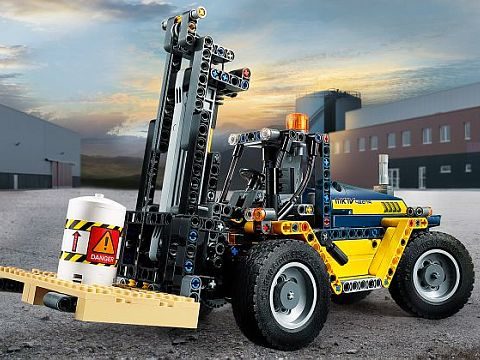


The #42079 LEGO Technic Heavy Duty Forklift is a 2-in 1 set, with the main model being a forklift featuring rear-wheel steering, 2-cylinder engine with moving pistons, and high-reach forks that can lift and tilt, plus a detailed driver’s cab, orange warning beacon and large tires. The set also includes a buildable pallet and a cargo barrel with hazard-warning stickers. The secondary model is a chunky-looking tow truck. This medium-size set is a nice introduction to LEGO Technic with just enough functions for a good building experience. I also really like the colors, although I feel the price is about $10 too high, especially since the set doesn’t include any new pieces or colors. Still, it’s a good set overall, even more so if you can find it on sale. Sariel points out the technical pros and cons of the set, so make sure you check out his video-review below. The forklift measures over 7” (18cm) high, 12” (33cm) long and 4” (12cm) wide. The alternate model tow truck measures over 5” (13cm) high, 12” (32cm) long and 4” (12cm) wide. 592 pieces. Price: $69.99 – BUY HERE
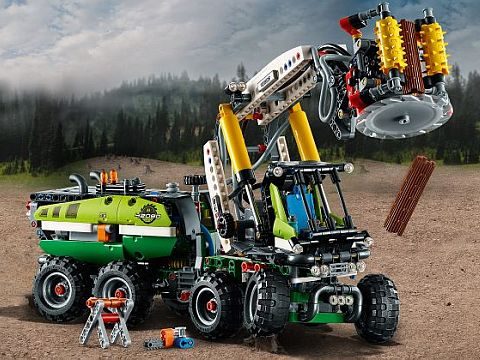
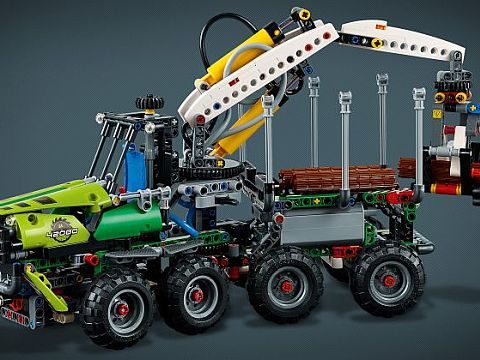
The #42080 LEGO Technic Forest Machine includes two very interesting machines that most of us don’t often encounter in real life; a forest harvester and a log loader. It’s worth noting that the two models work great together, so it might be worth getting two sets. The forest harvester features articulated steering, working suspension, multidirectional harvester head with a spinnable cutter blade, and a large rotating driver’s cab. The boom and grabber are motorized with a LEGO Power Functions motor and an advanced pneumatic system. The set also includes some new pieces and colors, so make sure you check out the video-review below. Lots of interesting features here, although it would have been nice if the blade was also motorized! The forest machine with boom retracted measures over 7” (18cm) high, 13” (35cm) long and 5” (13cm) wide. The log loader measures over 6” (17cm) high, 13” (35cm) long and 5” (13cm) wide. 1,003 pieces. Price: $149.99 – BUY HERE

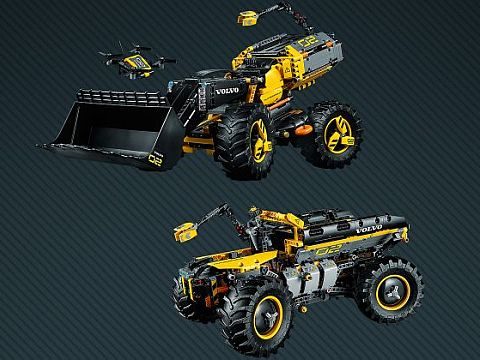

As the name implies, the #42081 LEGO Technic Volvo Concept Wheel Loader ZEUX is not based on a real vehicle, but what LEGO Technic and Volvo engineers imagined a construction vehicle in the future might look like. A fun idea that I would love to see more of! The wheel loader includes a camera arm, a mapping drone, working boom and bucket, adjustable counterbalance, 4-wheel steering and elaborate rims with heavy-duty tires. The alternate model is the futuristic Volvo Concept Hauler PEGAX, which also comes with a camera arm and mapping drone. Sariel mentioned in the video review below that the mechanical functions are slow to operate and this set would greatly benefit from adding LEGO Power Functions. This could be a good challenge for a mechanically inclined LEGO fan. The wheel loader measures over 7” (18cm) high, 23” (59cm) long and 8” (21cm) wide with counterbalance extended, and over 20” (51cm) long with counterbalance retracted. The hauler measures over 7” (18cm) high, 15” (40cm) long and 8” (22cm) wide with counterbalance extended, and over 10” (27cm) long with counterbalance retracted. 1,167 pieces. Price: $139.99 – BUY HERE
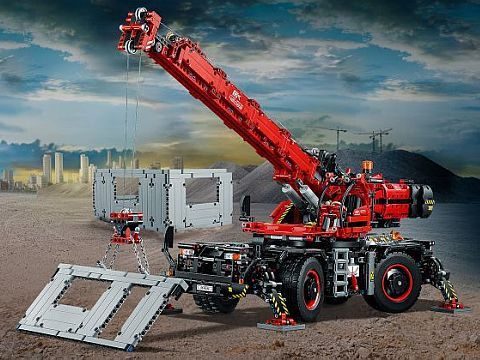
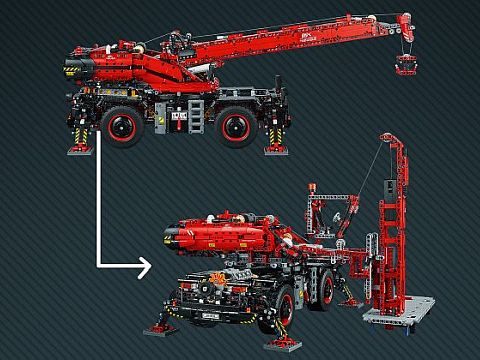
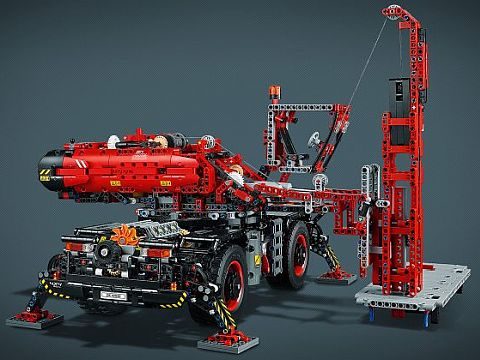
The #42082 LEGO Technic Rough Terrain Crane is the largest of the new LEGO Technic sets, the largest and tallest LEGO Technic crane to date, and the largest LEGO Technic set of all time. The set is even larger than the 3,929-piece #42055 LEGO Technic Bucket Wheel Excavator released in 2016. It is also the second most expensive LEGO Technic set of all time, after the #42083 LEGO Technic Bugatti Chiron ($349.99). Interestingly, the set doesn’t look that impressive or big on pictures. I attribute this to the simple black and red color-scheme, and because it’s just a crane – something we have seen many times in the LEGO Technic collection. Having said that, the set does have many interesting functions that are worth checking out. You can activate the LEGO Power Functions motor and select upper or lower crane mode for complete control over an array of easy-to-operate, motorized functions. You can also lower the stabilizer legs, rotate the superstructure through 360°, operate the lifting winch or send the extendable boom a meter into the air. Manual functions include 4-wheel steering, 4-wheel drive, detailed V8 engine with moving pistons and fan, and adjustable wing mirrors, plus a detailed operator’s cab with an opening door. Other features include 2 opening compartments with tools, chains and a fire extinguisher, plus 4 outrigger landing plates and 4 LEGO Technic building sections that can be lifted and assembled. The alternate model is a Mobile Pile Driver, which actually looks more impressive and interesting than the main model in my opinion. There is a lot to see here, so make sure you check out the video-review below. The crane measures over 39” (100cm) high, 25” (66cm) long and 10” (26cm) wide in working position, and over 10” (27cm) high, 29” (76cm) long and 7” (20cm) wide in driving position. The pile driver measures over 9” (24cm) high, 19” (50cm) long and 7” (20cm) wide in driving position. 4,057 pieces. Price: $299.99- BUY HERE
All in all, this is an interesting mix of LEGO Technic sets. We get everything from good entry-level sets to futuristic vehicles, to the largest LEGO Technic set of all time. Also, remember that each of the sets come with alternate models, so you essentially get two completely unique building experiences in one set. I do recommend that you thoughtfully select which model you want to build first, because taking apart and rebuilding LEGO Technic models is a complex and time-consuming task. If you want to take a look at any of the new models, they are available at the LEGO Technic section of the Online LEGO Shop.

What do you think? How do you like the new LEGO Technic sets? Do you have a favorite that you are planning to build? What other vehicles would you like to see in the LEGO Technic collection? Feel free to share and discuss in the comment section below! 😉
And you might also like to check out the following related posts:


